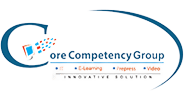Stay Ahead of the Curve with Multimodal Learning
Rohit Kumar
28 Nov, 2024

Multimodal learning strategically uses a mix of visual, auditory, reading/writing, and kinesthetic modalities to create a more robust and inclusive learning environment. This approach recognizes that employees have different ways of processing information. For instance, while one employee might grasp a concept quickly through a video tutorial, another might benefit more from a hands-on simulation or a detailed text guide.
Learners exposed to information through various channels are more likely to draw connections between different concepts, leading to a deeper understanding & the ability to apply what they’ve learned in real-world situations. Additionally, this approach supports the diverse learning needs within an organization, making training more inclusive and accessible, particularly for those with different learning abilities or preferences.
Types of Multimodal Learning
Below, we explore some of the key types of multimodal learning:
- Visual Learning: Visual learners thrive on seeing information presented through images, diagrams, videos, and infographics. For example, a training program might include instructional videos demonstrating processes or concepts accompanied by graphics and charts that break down complex information. Visual learning is particularly effective in helping employees grasp new concepts quickly and recall details more accurately.
- Auditory Learning: Information is best absorbed through listening for auditory learners. This includes traditional lectures, podcasts, webinars, or interactive discussions. Incorporating auditory elements into training allows these learners to engage more fully with the content. Auditory learning supports the development of listening skills and helps learners process information in a more conversational context.
- Reading/Writing Learning: Some learners excel through reading and writing activities, where they can engage deeply with written content and express their understanding through writing. This type of learning is supported by providing comprehensive written materials, such as detailed guides, articles, or reports, and encouraging reflective writing assignments or note-taking. For these learners, a well-structured text-based e-learning course with quizzes to reinforce critical points might be the most effective way to facilitate learning.
- Kinesthetic Learning: Kinesthetic learners, often called “hands-on” learners, learn best through physical activities and real-world experiences. This type of learning includes role-playing simulations, hands-on workshops, and interactive tasks that allow learners to practice what they’ve learned tangibly. For example, a company might create a simulated environment where employees can practice customer interactions or emergency procedures. This experiential approach helps learners to apply their knowledge in practical settings, enhancing skill development and confidence.
- Interactive and Collaborative Learning: Interactive and collaborative learning taps into the social aspects of learning, encouraging learners to engage with one another and with the material dynamically. This can include group projects, case studies, online forums, or interactive assessments that require learners to work together to solve problems or discuss concepts. With collaboration, this type of learning promotes critical thinking, teamwork, and the sharing of diverse perspectives.
- Blended Learning: Blended learning combines the strengths of multiple learning modalities, typically merging traditional face-to-face instruction with online learning components. This approach allows for a more flexible and comprehensive learning experience, where learners can benefit from in-person interactions and the convenience of online resources. For example, an organization might offer in-person workshops complemented by online courses that employees can complete at their own pace, ensuring that learning is continuous and adaptable to individual needs.
Multimodal Learning Strategies
- Video-Based Learning: Video is a powerful tool that combines visual and auditory elements, making it ideal for multimodal learning. Video-based learning strategies can range from short, focused microlearning videos that deliver bite-sized content to more in-depth tutorials and interactive video lessons. Interactive video content, where learners can engage with the material by answering questions or choosing different paths, further enhances engagement and retention.
- Interactive Assessments: Interactive assessments are an effective strategy for reinforcing learning and evaluating comprehension. These assessments can take the form of quizzes, drag-and-drop exercises, or scenario-based questions that require learners to apply what they've learned in practical situations. Additionally, providing immediate feedback within these assessments helps learners understand their mistakes & learn from them in real time.
- Role-Play Simulations: Simulations are essential to kinesthetic learning, offering learners a safe environment to practice real-world scenarios. Role-play simulations can be particularly effective in fields like customer service, sales, or compliance training, where learners can engage in realistic, interactive scenarios that mimic the challenges they might face on the job. This strategy builds confidence and enhances decision-making and problem-solving skills by allowing learners to experiment with different approaches in a risk-free setting.
- Blended Learning Programs: Blended learning combines traditional face-to-face instruction with digital learning experiences, offering a comprehensive and flexible learning approach. For instance, a blended program might start with an in-person workshop introducing key concepts, followed by an online module for deeper exploration, culminating in a group project or case study that allows learners to apply their knowledge collaboratively. This approach ensures continuous learning and can be tailored to different learning preferences and schedules.
- Social and Collaborative Learning: Social learning strategies leverage a group's collective knowledge and experience, encouraging peer-to-peer learning and collaboration. This is possible through online forums, discussion groups, collaborative projects, or social media platforms. By fostering an environment where learners can share ideas, ask questions, and provide feedback to one another, organizations can enhance the learning experience and build a more robust learning community.
- Gamification: Gamification introduces game-like elements into the learning process, such as point systems, leaderboards, badges, and rewards. This strategy is particularly effective for motivating learners and making the learning experience more engaging and enjoyable. Gamification can be applied across different types of content, from quizzes to simulations, encouraging learners to progress through the material while earning recognition for their achievements.
- Personalized Learning Paths: Personalization is a critical strategy in multimodal learning, as it allows learners to progress through content tailored to their specific needs, roles, or skill levels. Organizations can use a Learning Management System (LMS) to create personalized learning paths that guide learners through a curated set of resources and activities based on their job functions or areas of interest. For example, a new employee might follow a personalized onboarding path that includes e-learning modules, video tutorials, and interactive simulations. In contrast, a more experienced employee might focus on advanced topics relevant to their career development.
How to Launch Multimodal Learning in Your Organization
By following these steps, you can create a comprehensive learning experience that leverages multiple modalities to engage and educate your workforce effectively.
- Define Learning Objectives and Audience Needs: The first step in launching a multimodal learning program is to clearly define your learning objectives and understand the needs of your audience. Determine what skills, knowledge, or behaviors you want to develop in your employees and identify the diverse learning styles within your workforce. Use interviews or focus groups to collect feedback on what types of learning modalities they find most compelling. This information will guide you in selecting the right mix of modalities—such as video, simulations, reading materials, and collaborative activities—to include in your program.
- Select the Right Tools and Platforms: To successfully implement a multimodal learning program, you need to choose the right tools and platforms that support various learning modalities. A Learning Management System (LMS) is essential for organizing, delivering, and tracking learning content across different formats. Additionally, consider using authoring tools like iSpring Suite, which allows you to create and customize various content types, including video-based courses, quizzes, and simulations. Ensure that the tools you select are SCORM-compliant, mobile-friendly, and accessible to all learners, including those with disabilities. This ensures that your content is widely usable and meets the diverse needs of your brilliant workforce.
- Develop and Curate Multimodal Content: The next step is to develop and curate the multimodal content that will form the core of your learning program. Depending on your strategy, this might include creating instructional videos, interactive simulations, written guides, podcasts, and collaborative activities. Creating engaging, high-quality materials aligned with your learning objectives when developing content. Ensure each content is designed with the learner in mind, making it relevant, concise, and interactive. Incorporate assessments and feedback mechanisms to help learners track their progress and reinforce their learning where possible.
- Create Personalized Learning Paths: In your LMS, organize the content into learning paths employees can follow at their own pace. For example, new hires might start with a foundational path that includes onboarding videos, interactive assessments, and introductory e-learning modules. More experienced employees might have access to advanced content, such as industry-specific simulations or leadership development programs. Personalized learning paths make the learning experience more relevant and help employees take ownership of their professional development.
- Launch, Communicate, and Encourage Participation:Develop a communication plan that includes emails, intranet announcements, and possibly even launch events or webinars to introduce the program. Encourage participation by highlighting how the program will help employees develop valuable skills, enhance their performance, and advance their careers. Provide clear instructions on accessing the learning materials and navigating the LMS. Consider offering incentives such as recognition, badges, or rewards for completing courses or achieving specific milestones to boost engagement.
- Monitor, Evaluate, and Optimize: After launching your multimodal learning program, it's essential to continuously monitor its effectiveness and adjust as needed. Use your LMS's tracking and reporting features to gather data on learner participation, completion rates, and assessment scores. This data will help you evaluate how well the program meets its objectives and where improvements might be needed. Ask them about the content's effectiveness, the platform's ease of use, and any challenges they encountered. Use this feedback to optimize the program by updating content, refining learning paths, or introducing new modalities that better meet learner needs. By continuously optimizing your multimodal learning program, you can make sure that it remains effective, engaging, and relevant over time.
Conclusion
A solid and adaptable workforce is critical for success in today's dynamic business environment. Core Competency understands this need and offers a cutting-edge Learning Management System (LMS) designed to empower your employees with the skills and knowledge to thrive.
Our comprehensive LMS solution allows you to create engaging and diverse learning experiences, including video-based courses, interactive quizzes, and realistic simulations, easily customized using authoring tools like iSpring Suite. We ensure your training programs are accessible to all learners, regardless of their location or device preference, with mobile-friendly and SCORM-compliant content.
With our LMS, you can streamline training processes, track learner progress effortlessly, and gather valuable data to measure learning outcomes and optimize your training strategy.




